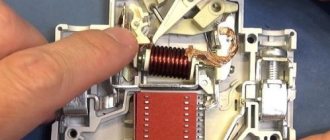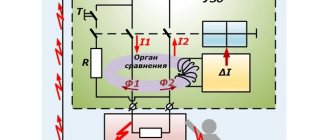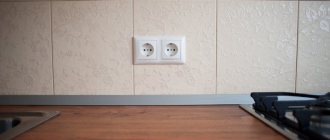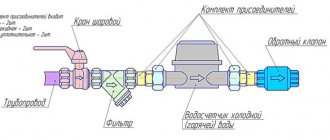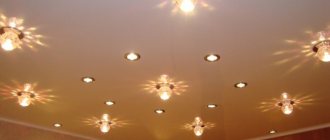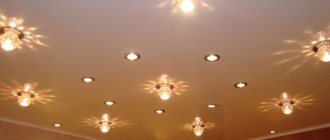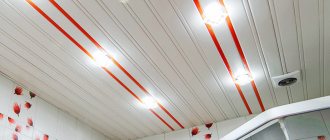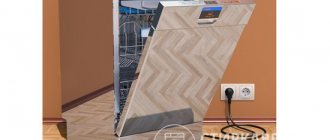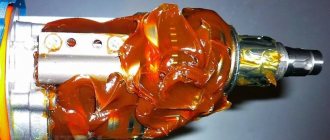The socket is an important element of the lighting device; it connects the base to the electrical cable and secures the lamp. And in some models of lamps a shade or lampshade is attached to it.
If you don’t know how to connect the socket to the wires on the ceiling, and don’t want to call an electrician, then try to figure out the installation yourself. To carry out high-quality work, you need to understand how it works, study the installation features of different types of products, and follow safety regulations. After this, you will be able to repair the failed device yourself.
Types by type of socles
Electric cartridges can be divided according to the type of base.
There are two large groups - threaded and pin devices. Sockets with threads on the inside are suitable for bulbs with a threaded base. They are marked E14, E27 and others, where E indicates the method of fixation (thread), and the number indicates the diameter. The following 8 standard sizes are standard: E5, E10, E14, E12, E17, E26, E27, E40. To install the light source, you need to screw it on.
Pin models are designated by the letter G. The number after the letter indicates the distance between the pins in mm. With a four-pin connection, the number indicates the distance between opposite holes. Such devices are used in spotlights for suspended and suspended ceilings. Products with pins are divided according to the body material, liner material, type of fastening, distance and number of contacts.
There are U-shaped lamps and cylindrical ones. Electric chucks marked GX23, 2G7 and others are used for them. They differ in the number of contacts.
What kind of lamps are used in spotlights?
In stores you can find a whole range of products for spotlights, they differ in both voltage and design
When replacing a lamp, you need to pay attention to both factors:
- Supply voltage – 12, 24 or 220 V.
- Base type.
The 12V supply voltage allows the use of such lamps in any room, including wet ones - the bathroom and kitchen. The type of base already depends on the lamp itself; for spotlights there are quite a lot of them, among them the most common ones can be identified:
- E14;
- E27;
- GU4;
- GU5.3;
- GU10;
- GX53;
Generally speaking, they can be divided into two groups:
- Threaded base.
- Pin (the lamp must be inserted with or without rotation).
The last difference is the type of lamp:
- Incandescent lamp;
- Halogen;
- Luminescent;
- LED;
The last two types are usually called “Energy Saving”. Let's figure out how to change an LED and any other light bulb in a spotlight.
This is interesting: How to wash a matte stretch ceiling without streaks at home?
What to do if there are more than two wires
How to connect a cartridge if there are four, five or more wires? There is no need to panic.
You need to determine which of these wires are phase and which are neutral. Your faithful friend, the sampler, will help you with this. The test is carried out with the voltage connected.
The probe light will not light up on the neutral wires, but it will on the phase wires. You should not trust the colors of the wires - electricians often confuse the colors during installation, and it is better to check everything carefully yourself.
In this case, when you turn on the cartridge, you will have not 220, but 380 volts. In this case, the network is overloaded, and it’s good if the machine works - the light bulb, socket, switch, and even the electrical wiring may burn out, and the whole thing will have to be changed.
In some cases, two wires come to the lighting network, which are registered by the probe as zero. Most likely, the second wire is ground.
Grounding must be installed on all lamps that are connected to suspended ceilings with metal frames, as well as to the frame of these ceilings. You can determine which wire is grounding using a tester by measuring the resistance between the grounding input in the panel and the grounding terminal on the ceiling.
You cannot confuse the neutral wire with grounding - your RCD will immediately trip when you turn it on; the automatic circuit breaker, however, may not work. Therefore, it is also necessary to measure with a tester whether the neutral wire is truly neutral.
So, we have determined which of the wires is phase, and found out which of the switch keys opens. It is advisable to tape the other switch keys on the outside with tape in the off position in order to immediately find the one you need and turn it on. Then you need to connect the cartridge as described earlier.
How to connect a chandelier with three wires to a suspended ceiling - in the video:
Solution options
There are several ways to unscrew a light bulb if it has burst, and each of them is good in its own way. The main thing that needs to be done first is to turn off the power to the damaged chandelier or other lighting device.
Ideally, of course, if the electrical wiring was installed with several inputs, then it is possible to turn off the power from the circuit breaker to only part of the room, leaving yourself the opportunity to connect a portable lamp in the next room. If this is not possible, then you will have to turn off the power to the entire apartment and illuminate it with a flashlight or cell phone when removing the broken light bulb. If there is a central tube left in the cartridge in addition to the base, it is carefully broken.
When the power is turned off, you should not rely on the switch of a broken lighting fixture - it may be powered during installation incorrectly and interrupt the neutral wire rather than the phase wire.
Pliers
Having carefully removed the remaining fragments, you need to pick up the edge of the base with pliers (without grabbing the cartridge) and begin to rotate it counterclockwise. If the metal base has become stuck or stuck due to rust, it would not hurt to first spray the stuck surface with cologne or toilet water so that the liquid gets between the base and the cartridge, and give it a little time to soak. Another acceptable option is to stick the pliers in and open them, after which you can try to unscrew the part.
Disassembly
This option is not feasible with new ceramics. It can be used if the cartridge is made of carbolite, because it will be collapsible. How to unscrew the cartridge? It is not difficult. You need to carefully, holding the base with one hand, unscrew the cylinder, dividing it in two. The “skirt” with the base stuck in it will remain in your hands. Here, no longer under the ceiling, you can safely unscrew the base of the light bulb using any of the suggested methods.
Plastic bottle
This option requires caution, because hot plastic that gets on the skin is a very painful thing. So, the neck of a soda bottle is heated over an open fire to the melting point, after which it is inserted inside the metal base
You need to wait a little until the plastic cools down, after which you can turn the light bulb out of the socket. The fact is that the heated plastic sticks inside the base of the light bulb, penetrating into irregularities, with the help of which it fixes the base. At the same time, heating the base burns off some of the oxidation and rust.
Champagne cork
Similarly, you can use a wine or champagne cork. Its edges need to be slightly sharpened by chamfering, and then driven into the stuck base of the light bulb. Slowly, using a gentle unscrewing motion, try to unscrew the base and pull it out. Any metal base of any lamp with a screw base is unscrewed exclusively counterclockwise - this must be remembered so as not to waste energy and time.
Potato
Probably the most interesting and unusual method of all presented. It can be used if there are fragments of the bulb sticking out of the base. The potato must be cut into two parts, take one of them in your hand and, as it were, “plant” the cut part on the protruding pieces of glass. Then simply unscrew the base from the socket.
How to connect the cartridge correctly?
Among household products, the most difficult to connect wires to is the old type of cartridge - “Soviet”, since it must first be disassembled.
These devices are easily recognized by their black polymer housing. To get to the terminals, the carbolite housing must be unscrewed.
To secure the wires, they need to be stripped and shaped into “loops” to make it easier to secure to the contacts. The phase is fixed to the central screw contact, zero - to the second terminal.
When tightening a threaded connection, it is necessary to apply force and remember that it simultaneously transmits tension to the contact. When the wires are connected, all that remains is to connect the two parts of the housing.
Mounting methods in lighting fixtures
Difficulties in installing the socket may be caused by the design of the chandelier or lamp. In order to quickly cope with the replacement of a broken product, we recommend that you become familiar with its structure and position in advance, before the initial installation of the lighting device.
Lamp manufacturers most often choose the following methods of mounting sockets:
- for the electrical wire;
- on a metal tube;
- using a bushing;
- latches.
In the first case, it is necessary to additionally strengthen the wire; for this, use a sleeve with a fastening screw, which is screwed into the bottom of the cartridge.
The metal tube is used more often, as it allows the installation of heavy chandeliers with a large number of decorative elements.
Cartridges with bushings are heated, as a result of which the elements are deformed. Therefore, it is recommended to replace plastic bushings with metal ones.
The latter mounting option is suitable for devices with screwless terminals. The cartridge is installed in parts. First, the bottom is secured, then the wires are inserted, and only then the remaining part of the cartridge is mounted using latches.
Connection option with screw terminals
Cartridges of a more modern type do not need to be disassembled - the terminals are located on the outside. The wires are fixed with screw clamps, the connection process takes only a few minutes.
The only disadvantage of such a cartridge is the impossibility of repair. If the terminals are burnt or the product is deformed, you will have to replace it completely.
Image gallery Photos from
Using a flat-head screwdriver, unscrew the two screws that secure the wires into the sockets with terminals
Voltage from the phase must be supplied to the central terminal, so before connecting we check the wires with an indicator screwdriver
We insert the wires into the selected terminals, carefully tighten the fastening bolts - tightly, but without pinching or bending
Step 1 – stripping the ends of the wires
Step 2 - unscrewing the mounting bolts
Step 3 - phase determination and terminal selection
Step 4 - Connecting Wires to Terminals
The connection option with clamps is relevant for luminaires designed for E14 and E27 lamps. When installing a new cartridge and replacing it, be sure to check it for integrity and compliance with standards.
Let's assume that the number of turns must be at least three, and there must be no cracks or chips on the body.
Mounting methods
In most cases, the socket is connected to the lighting fixture through the bottom. There is a hole in the bottom for entering an electrical cable. The E27 series is available with M16, M10 or M13 threads, and the E14 - M10.
For current-carrying wires
Direct connection of the cartridge to the wires is unacceptable! First you need to ensure reliable fastening of the product in the lighting fixture (lamp or chandelier), for which a plastic sleeve with a hole in the center necessary for the cable is installed on the bottom. A plastic screw is mounted to the sleeve for further fixation.
Connect the socket, clamp the wires with a plastic screw. The sleeve is intended for mounting decorative parts, and the screw ensures reliable fixation of the lampshade and the device suspension.
On the phone
The socket is attached using a metal tube, which allows you to hang heavy lampshades from the ceiling. The tube is equipped with additional nuts, with the help of which the fittings for the chandelier, including caps, are installed. The entire load falls on the metal tube, and the wires needed to connect the power are pulled directly through it.
Cartridges with threads on the outer surface of the body can be decorated with lampshade rings and other decorative elements.
Bushing
Tubular bushings are used for fastening sockets in table lamps and wall sconces. Products are made from sheet materials. It is enough to make a hole through which the cartridge should be attached using a sleeve.
Due to the heating of the light bulb, plastic bushings can become deformed, causing the socket to begin to wobble. Replace plastic with metal.
The mounting thread varies, as there is no specific standard for E27 socket sockets. To replace a plastic bushing with a metal one, use resistors. Before breaking, disassemble and compare the threads so as not to ruin the product in vain.
With screwless terminals
The body and bottom of the cartridge, using screwless clamp contacts, are connected to each other using two latches. The bottom of the product is screwed to the threaded tube, after which the electrical wires are inserted. The body is made in the shape of a cylinder and is attached to the bottom.
Elements are subject to repair and maintenance. Use a screwdriver and move the latches to the sides so as not to damage the cable when dismantling the product.
Purpose of the cartridge
Types of electric cartridges
The electrical network in a home or workplace consists of wires and electrical appliances, as well as various electromechanical products. Such devices include an electric cartridge. It connects a lighting device (LED, fluorescent or any other light bulb) with a cable and fixes it in a ceiling, wall or table lamp.
The sockets are used for all types of lamps
It is important that the light bulb has the same base as the electric socket. Otherwise, it will not be possible to connect it. Such devices are made from different materials - thermoplastic, ceramics, metal, heat-resistant polymers
Such devices are made from different materials - thermoplastic, ceramics, metal, heat-resistant polymers.
Recommendations from experts
- It is recommended to buy only high-quality products from well-known brands to prevent premature failure of the device.
- It is prohibited to replace the cartridge when mains voltage is present. The consequences can be quite serious.
- If a fault is detected in the main electrical wiring, you should definitely replace either the damaged section of the cable or the entire wiring.
- The phase must always be connected to the central contact of the product, but not to the sleeve (when screwing the lamp in, it will produce an electric shock).
- Some cartridge models are equipped with lead wires. In the case of connecting wires of different types (the main one is aluminum, the one from the lamp is copper), it is recommended to use special terminal blocks. If there are none, then after twisting the wires need to be well insulated.
How to connect an electric cartridge
To connect electric sockets in a lamp or chandelier to the electrical wiring, depending on their design, detachable and non-detachable methods are used.
With the detachable method, the electrical wiring wires are connected to the socket using a threaded screw, terminals or clamps (screwless method).
The one-piece method includes connection by soldering or by pressing wires to the contacts of the cartridge by the manufacturer, for example, as in the cartridges of the G4-G10 series. Two insulated conductors about 10 cm long simply come out of them. Such cartridges are usually connected to electrical wiring using terminal blocks, for example Vago.
Connecting the electric socket using screws
In order to master in detail the technology of connecting an electric socket to wires, let’s consider the process of assembling the socket from scratch. This skill will also be useful when repairing electric cartridges.
A brass central contact plate is pressed against the ceramic liner. Using a screw screwed into a steel plate located on the opposite side of the liner, the contact plate is fixed to the liner. The screw not only performs the task of securing the central contact, but during operation of the cartridge, current is supplied through it to the central contact. The screw must be tightened with sufficient force, since it is involved in the transmission of current from the wire to the lamp base. Next, the second brass plate is attached in the same way. The central contact is bent to the level of the side contacts.
Connecting an electric socket with screw terminals
More modern are electric sockets, the wires of which are connected using screw terminals, reminiscent of terminal block clamps. This type of connection of the electric cartridge significantly speeds up the work of connecting it to the electrical wiring during installation.
Electric sockets with clamping terminals are found in standard sizes E14 and E27 and are quite suitable for replacing traditional collapsible sockets, the design of which is described above, when repairing lamps and chandeliers.
How to insert wires into a screwless electrical socket
Since modern energy-saving and LED lamps consume little electricity, the number of sockets connected in this way can reach ten or more. Connecting contactless electric cartridges is easy and quick. It is enough to insert the wire, stripped of insulation for a length of one centimeter, into the hole provided for this.
But there is a feature that needs to be taken into account. Wires in the manufacture of chandeliers are usually multi-stranded, and it is almost impossible to securely fix them in the contacts of the electric cartridge, especially if the wire strands are thin. Therefore, at chandelier manufacturing plants, the ends of the wires connected to the socket are tinned. As a result, the stranded wire becomes single-core at the end. The tinned end of the wire is easily inserted into the spring contact of the cartridge and securely fixed.
The photo shows the sequence of connecting the cartridge to the electrical wiring. When replacing a socket in a chandelier, it may be impossible to get close to the wires with your fingers, then tweezers come to the rescue.
But you don’t always have a soldering iron at hand, and not everyone has one at home. In this case, when connecting the cartridge, you can do without a soldering iron. Before threading the wire into the spring contact of the cartridge, you need to insert a metal rod into the hole with a diameter slightly larger than the diameter of the wire, for example, a nail or, as in the photo, a clock screwdriver. Then the springy contact will move away and the wire will easily fit into the resulting gap. After removing the nail, the spring contact will securely clamp the wire. With this technique, if necessary, it is easy to remove the wires from the socket.
After inserting the wire into the spring contact of the cartridge, you must pull the wire lightly to check the reliability of its fixation.
How to remove wires from a screwless electrical socket
When repairing lamps, it is sometimes necessary to remove the wire from the self-clamping terminals of the socket. Usually the wire is held tightly by the spring terminal and cannot be removed by simple pulling.
You can only remove the wire if you pull it with a little force while simultaneously turning it back and forth.
If it is possible to insert into the terminal, as shown in the photo above, a smooth steel rod with a diameter slightly larger than the wire, for example, a drill, nail or screwdriver, then the wires can also be pulled out in this way.
Common Mistakes
There are several basic mistakes that those who have little experience in connecting cartridges make:
- Installation of chandeliers before installing sockets. It is much more convenient to do the work on the table and only then hang the equipment.
- Fastening contacts of stranded wires without tinning them. This option is not reliable and contact inevitably deteriorates over time.
- Connecting the phase to the side contact. This not only adversely affects the operation of the lamp, but also poses a danger to humans when replacing it.
- Often overlooked are the screws that hold the contact plates on the top of the ceramic liner.
If they are not clamped well, the contact will be poor, which will lead to constant overheating of the cartridge during operation. Do not insert different wires into holes located next to each other. - Inserting the zero and phase wires into the parallel sockets of the self-clamping chuck. This causes a short circuit when turned on.
- Replacement of the unit due to a poorly pressed central contact. Often this element bends and is not pressed against the base. But if you carefully bend it, the fault can be eliminated without installing a new part.
Connecting the light bulb socket to the wires is not difficult, since there are few connection options and they are all simple. The main thing is to comply with safety standards and prevent short circuits of oppositely polarized wires.
Types and markings of cartridges
All types used now can be divided into two groups - screw and pin. The first option involves screwing the light bulb into the Edison thread, the second involves snapping special pins into the seat. Requirements for quality and performance characteristics are specified in GOST.
Screw chucks are marked with the letter “E”; the number indicates the diameter of the threaded part. Most often, one of three varieties is used:
- E14, popularly called “Minion”. A narrow base, designed for low-power lamps, is used in most new chandeliers. Ideal for LED and incandescent light sources up to 60 W. The lamp power limit is usually 440 W at a current of no more than 2 A.
- E27. The most common option today, which was previously installed in all types of lamps. Designed for standard incandescent lamps, you can install any other options with the appropriate base size. The maximum power of light bulbs for this type is 880 W, the current strength is not higher than 4 A.
- E40. Made only from ceramics, designed for street lighting and can be used with lamps with a power of up to 3500 W and a current of up to 16 A.
Pin or pin sockets are distinguished by the fact that lamps are not screwed into them, but are inserted into the base and fixed by protruding contacts. They are marked with the letter “G”, the number indicating the distance between the contact elements. Main varieties:
- G4, G5.3, G6.35, G8 and G10 have exactly the same design and differ only in the distance between the contacts. Suitable for compact halogen and LED bulbs, used in chandeliers and spotlights. Designed for light sources with a power of up to 60 W and a load current of no higher than 5 A.
- G9. Designed for light sources with flat contacts.
- GU10. It differs in that after inserting the contacts, they rotate slightly and are thereby fixed in the seat.
- GX53. Flat cartridge designed for installation in suspended ceilings and suspended structures. Allows you to save space if it is limited.
Design
Electric cartridges have different designs, depending on the series of the device. Most often in everyday life, a model range equipped with Edison thread is used. It has a cylindrical body, inside which the remaining elements are contained.
Core
This is the bottom part of the cartridge, which has a wide base and holes for fastening. It may have various bushings and inserts in its design for removing the wire. Most often it is attached to the body of the chandelier.
Screw clamp
They look like threaded mounting strips. With their help, electric current is supplied to the core.
Pressure contact
Made of brass, most often it is a non-separable part of the device. Also responsible for supplying current to the light bulb.
Thread
The presence of a thread allows the use of various types of lamps - both incandescent and LED. It is most universal in the e14 and e27 cartridge models.
Frame
The cartridges can be equipped with a body made of various materials. Their characteristics and application possibilities depend on this. To figure out how to remove the cartridge from a chandelier, you need to know its design, including the type of housing. The following varieties are available for sale:
- Ceramic - made of heat-resistant ceramics, thanks to which they are able to withstand heating to high temperatures. As a rule, they are non-separable. Screw terminals are built into the base, with which connections are made. This is done using a regular screwdriver. The disadvantage of such cartridges is low strength.
- Plastic ones are unable to withstand high temperatures, which is why they are much inferior to ceramic ones. Designed for use with light bulbs no more powerful than 60 W. The design is usually collapsible, the contacts are located in the inner part. Connection to the lampshade is made using self-clamping terminals.
- Carbolite - characterized by increased strength and resistance to heat. They have a collapsible design; connection to the network occurs using brass contacts and a screw connection.
Purpose of the cartridge
Types of electric cartridges
The electrical network in a home or workplace consists of wires and electrical appliances, as well as various electromechanical products. Such devices include an electric cartridge. It connects a lighting device (LED, fluorescent or any other light bulb) with a cable and fixes it in a ceiling, wall or table lamp.
The sockets are used for all types of lamps
It is important that the light bulb has the same base as the electric socket. Otherwise, you won’t be able to connect it.
Such devices are made from different materials - thermoplastic, ceramics, metal, heat-resistant polymers.
Recommendations from experts
- It is recommended to buy only high-quality products from well-known brands to prevent premature failure of the device.
- It is prohibited to replace the cartridge when mains voltage is present. The consequences can be quite serious.
- If a fault is detected in the main electrical wiring, you should definitely replace either the damaged section of the cable or the entire wiring.
- The phase must always be connected to the central contact of the product, but not to the sleeve (when screwing the lamp in, it will produce an electric shock).
- Some cartridge models are equipped with lead wires. In the case of connecting wires of different types (the main one is aluminum, the one from the lamp is copper), it is recommended to use special terminal blocks. If there are none, then after twisting the wires need to be well insulated.
Expert opinion
Ivan Zaitsev
Lighting specialist, consultant in the building materials department of a large chain of stores
Important! It is not recommended to carry out electrical installation work yourself if you are not completely confident in the correct step-by-step actions; it is better to seek help from an experienced electrician!
Repair of a collapsible electric cartridge
In some simple cases, non-working electric cartridges can easily be repaired independently:
Disassemble the housing and inspect the contacts located under the unscrewed cover. Check the copper contact plates for bending, oxidation or coating with rust formed during operation in rooms with high humidity levels. Cleaning the contacts using sandpaper or a thin file, as well as carefully bending the contacts to the desired level. Inspect the contact screw fasteners located on the back of the ceramic bottom, clean them and carefully tighten them.
The success of the repair work is determined by testing after screwing in and turning on the light bulb.
Options for the development of events
An incandescent (or halogen) light bulb burst due to a power surge or a manufacturing defect during operation. Then in the socket, in addition to the base itself, there will also be sharp fragments from the light bulb sticking out of it. In this case, you need to be especially careful when dismantling the remaining part of the light fixture. Or it may happen that the bulb breaks when unscrewing, if there is rust inside the cartridge that prevents the base from being unscrewed.
Also, the cause of such trouble can be a defect in which the flask itself easily separates from the metal base.
How to unscrew a broken light bulb in any of the above cases without resorting to the help of specialists? The main thing is calm. You should not rush anywhere when removing the remains of the damaged light element, so that no further trouble occurs, such as a cut on the glass or a broken cartridge.
Connecting the electric cartridge
Connection contacts The screw also acts as a current conductor. For this reason, it should be screwed securely to ensure good contact. The second brass plate is installed in a similar manner.
Rings need to be formed on the conductors. They are threaded through the bottom and attached to steel plates. When connecting the cartridge through a standard switch, the phase is connected to the central contact. The neutral wire is connected to the side contact
It is important to follow the markings when connecting wires
Connecting a cartridge with terminals
Terminal cartridge There is a new type of cartridge. In them, the wires are pressed using terminal blocks. This installation method allows you to speed up the installation of light bulbs in chandeliers.
The body is made of plastic and is monolithic. The contacts are fastened on the inside with rivets. The disadvantage of such cartridges is the impossibility of repair if they break.
Chucks are available with terminals with E14 and E27 sockets.
Connecting a screwless electric chuck
Devices with screwless connections are easy to install. Inside there are brass springs that are used to pinch and secure the conductors. The housing has holes, usually two pairs.
Main conclusions
As you can see, you can connect the cartridge to the wires without outside help. However, when choosing a device, take into account the type and design of the light source; they must match. To do this, you need to understand product labeling. The luminaire can be attached to the luminaire in two ways: removable (screws, clamps, terminals) and permanent. It can be attached to wires, to a pipe using a sleeve or screwless clamps. If you notice a problem with the lamp, be sure to inspect the socket. It is recommended to disassemble, inspect the contacts, clean the brass plates, and, if necessary, bend them closer to the lamp base. Carry out all work only with the electricity turned off!
Wire distribution
It is best to distribute the wires at the stage of forming the suspended ceiling frame and secure them to the frame in advance so that when drilling holes for the lamps, you can get the wire loops and make the connection.
As a last resort, the wire is supplied to the first of them, and for all subsequent wires they are threaded from hole to hole. The disadvantage of the latter option is the impossibility of securing the wires to the frame, and they will simply lie on the surface of the suspended ceiling material.
With normal advance distribution of the wire, it is enough to lay a two- or three-core cable along the optimal route to all installation locations of the lamps, leaving a loop of 10-15 cm of bent wire at each point.
Fastening to the frame should be done using plastic ties, but not tightly and with a slight sag of the wire, without tension. This will prevent damage to the wire due to thermal changes in its length. After this, you can begin covering the suspended ceiling.
When installing a suspended ceiling, place the wires close to the intended recess locations for the light bulbs. Professionals advise doing this by leaving a 10-15 cm loop around the entire perimeter of the ceiling: this way you can change the layout of the lamps at the last moment, if necessary.
Calculation of the number of lamps
It is advisable to purchase lamps of the same type and from the same company, so that there are no problems with design and direct installation. Consider the area illuminated by LED lamps - about 1.5 - 2 square meters. It is better to buy more lamps than to suffer from a lack of light.
Don't overdo it: take into account the entire weight of the structure on the ceiling. Modern lamps are often made with metal frames, which can lead to uneven ceilings.
Depending on the area of the room, you can determine the optimal value of the required power level using the existing table:
| Room area sq.m. | Very bright light ~ 500 lux | Bright light ~ 300 lux | Soft light ~ 150 lux |
| less than 6 | 150W | 100W | 60W |
| from 6 to 8 | 200W | 140W | 80W |
| from 8 to 10 | 250W | 175W | 100W |
| from 10 to 12 | 300W | 210W | 120W |
| from 12 to 16 | 400W | 280W | 160W |
| from 16 to 20 | 500W | 350W | 200W |
| from 20 to 25 | 600W | 420W | 240W |
| from 25 to 30 | 700W | 490W | 280W |
There is now a new model on the market called “dancing light”, the rays of which perfectly illuminate the surfaces around the bulb, which creates additional illumination in the room.
Forming holes for lamps
Prepare a bit for drilling into wood. Usually they drill sockets for switches and furniture elements for wires (for example, a tabletop). At the end you will get perfectly even circles for further processing.
Measure the diameter of the protruding part of the lamp and drill holes 1 cm smaller than this circle - this will allow you to remove the wires from the visibility of the suspended ceiling.
You can finally decide on the position of the lamps only after the ceiling is completely sheathed. During the design, the moment of placing the spots at a distance from the frame elements was already taken into account.
Now you should also take into account the location of the seams between the elements of the suspended ceiling; this is especially important when installing lamps in a suspended ceiling covered with plastic or aluminum. If the lamp is placed at the junction of the ceiling elements, then it should be moved to the middle of one of the strips
The holes are drilled using a special wood bit, which also drills recesses for the socket boxes. In this case, perfectly straight holes are obtained; this option allows you to effectively fix the lamp in drywall. The diameter of the holes must be selected in accordance with the dimensions of the devices used.
It should be 3-4 mm smaller than the outer diameter of the front part of the lamp, but larger than the dimensions of its inner part. The most commonly selected size is 60 or 75 mm
Important: Remember that once you drill a hole, it cannot be moved, so once again make sure that its location is correct
Advantages and disadvantages
Advantages of this cartridge:
ease of disassembly and assembly
time-tested reliability
contact pads are fixed with screws
Firstly, if necessary (burnout, melting), they can be replaced. Or simply tighten it when the contacts loosen and the connection heats up.
By the way, these screws need to be tightened initially, even before directly connecting the wires. This will extend the life of the socket and light bulb significantly.
In 90% of cases, the light bulb stops shining because the central contact heats up and its plate-shaped area begins to bend, gradually moving away from the lamp base.
Flaws:
inconvenient connection to screw terminals
To ensure good contact, you will have to unscrew them entirely from their seat.
Moreover, if you have a non-Wera screwdriver with a bunch of additional “chips,” then this screw often falls out and rolls into the most inappropriate places.
Although experienced electricians do without completely unscrewing the screws and bending the neat rings on the copper conductors. The entire connection is made much easier.
The veins are stripped a little more than usual (2-3 centimeters), and the screws are only loosened. Next, place the vein under the washer with the screw and make a turn strictly in the direction of tightening the thread.
This is necessary so that when tightening the screw, the ring does not unbend, but rather tightens even better.
After this, bite off all the excess protruding behind the bolt with side cutters. You should end up with some kind of half ring.
All that remains is to squeeze it with platypuses to a full ring.
It is not yet possible to tighten such a connection. It should “play” in its seat.
Take the second wire and do the same procedure with it. Only then can the screws be tightened as far as possible. As a result of such a connection, there is no need to unscrew anything, make some rings in advance, guessing the diameter of the bolts.
All this is adjusted directly on the cartridge itself. Saving time and labor costs is obvious.
The only disadvantage of this method is that the wire consumption will be a couple of centimeters more than usual.
Change or repair
If one or more light bulbs in a lamp do not light after replacement, this is most often caused by a faulty socket. The cause of the problem may be oxidation of the junction of the contacts with the light bulb base. You can check this without disassembling the entire lamp:
- De-energize the network by turning off the packager.
- Unscrew the light bulb.
- Using a flashlight, shine it into the cartridge.
- Inspect the ends of the terminals for the presence of carbon deposits, rust, and oxidation products.
- Clean the ends of the contacts with a fine file or screwdriver.
- The metal terminals may be loose and bent against the walls, so tighten them all the way and bend them back with a screwdriver.
All these procedures can be performed without removing the lampshade and dismantling its parts. If, during a visual inspection, it turns out that the contacts have fallen off, the wires have burned out, the holder body is cracked, partially broken off, or after all the above steps a working light bulb does not light up, you will need to completely replace the old socket in the lamp with a new one.
Connecting the illuminator from an outlet
In a situation where the switch is installed in a new place (in the absence of a special niche), it can be mounted directly on the wall and powered from a nearby outlet. In this case, before connecting the lamp through the switch, it is necessary to extend the phase and zero from it, as shown in the photo below. In certain conditions, one phase is sufficient for this, since the neutral wire is already connected to the wall lights from the junction box.
Before connecting lamps with a switch from the nearest outlet, you need to familiarize yourself with the features of this procedure. The order of its execution looks like this:
- First, an indicator screwdriver is taken, with which the phase wire is determined and remembered, from which the wire is subsequently routed to the switch (it can be located either on the right or on the left).
- After this, the dangerous voltage of 220 volts is removed from the line, in which a switch is installed along with sockets, using an automatic machine.
- To be sure of its absence, it is advisable to check it with an indicator screwdriver.
- Before connecting the lamp through the switch from the socket, you need to remove the decorative cover from it, under which there are two contacts.
- A conductor of the required length is connected to one of them (phase) and routed to a single switch.
Upon completion of the preparatory procedures, the wire coming from the outlet is supplied to the switch mounted on the wall with the cover removed (it is connected to its lower terminal). Another conductor is pulled from the top contact towards the lamp, which is placed in a cable channel or tubular corrugation for aesthetics. In the same way, you can close the wire in the area from the outlet to the switch.
Connection diagram for a luminaire via a switch in a combined socket-switch unit in one housing:
If it is necessary to use spotlights in an apartment, it is assumed that they can be supplied with either a standard mains voltage of 220 volts or reduced to a safe level of 12 volts.
The specific connection diagram for spotlights is selected taking into account the type of illuminators used, designed for the appropriate voltage.
Before connecting spotlights, you should pay attention to the fact that the order of their switching does not differ from the standard method
Connection with power supply
When installing spotlights or LED strips, a transformer is additionally introduced into the circuit, reducing the voltage from 220 to 12 Volts. Now these devices are called power supplies, produced for various voltages and load power.
Connection diagram for a group of spotlights with one step-down transformer:
Connection diagram for a group of spotlights with a transformer for each light:
Usually, to connect spotlights, an electronic converter (aka power supply) is selected, which compares favorably with other devices with the following advantages:
- Small size and light weight.
- Built-in short circuit protection.
- Smooth increase in voltage when turned on, extending the life of the bulbs.
- Ability to regulate and maintain stable power supply.
In addition, these devices are characterized by extremely low noise levels generated during operation of auxiliary equipment.
We invite you to watch a training video on the topic: “How to properly install spotlights.”
Security measures
To change the design yourself and avoid an emergency, you must follow safety regulations. They include the following:
- It is forbidden to carry out replacement without first de-energizing the network. If you neglect this rule, the risk of an accident is very high.
- If damage to the wires is discovered during dismantling, be sure to replace them (partially or completely).
- If the new cartridge is equipped with lead wires, you need to pay attention to the material they are made of. It is likely that the device has an aluminum conductor, and the lighting device is connected using copper (or vice versa). To connect such wires, it is advisable to use specially designed terminal blocks. As a last resort, it is permissible to carefully twist it and wrap it securely with electrical tape.
- Before removing the chandelier, you need to sketch or photograph its installation diagram. This will avoid incorrect connections and fasteners (which could cause a short circuit).
- Be careful when working with glass and ceramic elements. To avoid cuts, it is recommended to use gloves.
You can replace or repair the socket in an electric chandelier yourself. This does not require any special skills. It is enough just to follow safety precautions when handling wiring and electrical appliances, as well as perform consistent actions. When assembling the structure after completion of the work, you should responsibly approach the process of connecting conductors. If the work is completed without errors, the electrical appliance will emit light again.
A light bulb socket is an intermediate element used for a convenient and reliable connection between electrical wiring and a lamp. Often various decorative elements of modern chandeliers and lamps are attached to it.
How to connect a light bulb socket
Connecting a lighting socket to the electrical wiring of a house is carried out using one of two methods - detachable or permanent. In the first case (the method is called “screw”) fastening is carried out using a threaded screw or a special terminal.
Permanent fastening is associated with homemade soldering or press-fitting at the product manufacturer. The last procedure is relevant for elements of the G4-G10 series. Two insulated cables are pre-lead from them, the length of which does not exceed 100 mm. The elements are attached to the electrical wiring using a terminal block.
Ordinary electric
First you need to understand the assembly procedure of a conventional electric cartridge. A ceramic liner is made, onto which a brass plate is pressed, used as the main contact. On the other side of the liner there is a steel plate; a screw is screwed to it, ensuring reliable fastening of the plate to the liner. The same screw also performs another function - current flows through it to the main contact.
When tightening the screw, use a lot of force, which is due to its participation in the transmission of electric current from the cable to the light bulb. The same sequence of actions is used to attach the second brass plate, after which the main contact is bent so that it is level with the side ones.
Next, form rings on the conductors, thread them through the bottom and secure them to the steel plates. If the cartridge is used in an electrical circuit with a stationary switch, the wire transmitting the phase should be connected to the central contact. To check the reliability of contact, you need to install the light bulb in the base and make sure that when it rests on the side contacts, the main one bends by at least 2 mm. In case of less deflection, the main contact bends upward.
A cylindrical body is attached to this structure, then the cartridge can be used. Select light bulbs by matching the markings on both products.
Cartridge with terminals
When connecting electrical wiring to modern sockets, screw clamps on terminal blocks are used. The approach significantly speeds up the process of connecting and installing an electrical device.
The body is made of plastic, monolithic. Using a special rivet, the wires that supply the base are attached to the body.
Note! The main disadvantage of a product with terminals is the impossibility of repair, so if it fails, you need to completely replace the cartridge with a new one. Among the standard sizes, the most popular are the E14 and E27 model series, which are also used in conventional electrical products
Screwless electric
The most modern design involves the presence of special holes on the cartridge body - usually four (grouped in pairs). Wires are pulled through the holes, fixed with brass contacts using a spring mechanism. Pairwise connection of contacts simplifies the parallel connection of light bulbs in chandeliers or lamps. Electric current is supplied to the first cartridge, and subsequent ones are connected to it using jumpers.
Important! In this way, you can connect many housekeepers that consume a minimum of electricity. The products are characterized by simple and quick connection - strip the end of the wire and insert it into the correct hole on the body of the socket with a clamp fastening
The products are characterized by simple and quick connection - strip the end of the wire and insert it into the correct hole on the socket body with a clamp fastening.
Many chandeliers and lighting fixtures use thin stranded wires. It is unrealistic to ensure their reliable fastening in the body of a screwless cartridge. Choose chandeliers with serviced wire ends or solder an alloy onto the multi-core cable yourself so that the wire becomes single-core. Tinned ends are easier to insert into the contact of a screwless product.
If you don't know how to use a soldering iron, there is another way. Before inserting the stripped end of the cable into the hole, place a metal rod there that is larger in diameter than the wire itself. A nail and a screwdriver will do. Pull back the spring contact and insert the stranded wire into the hole without any problems. Remove the nail (rod) so that the contact clamps the wire strands. The same method is used for dismantling. Pull the cable lightly to check the connection is secure.
Screwless device
The most modern development is considered to be a screwless chandelier socket. It has special holes for the wire. Usually there are 2 pairs of them. A special spring mechanism tightly presses the wire that is pulled through them. The paired clamp system allows you to connect lamps from a chandelier with several lighting fixtures in parallel. When using energy-saving lamps, it is quite possible to connect 10 or even more electrical consumers to such a device. Use a flat blade screwdriver to remove the clamp. Next, the wire is inserted into the appropriate connector. After this, the screwdriver releases the brass spring. It will press the wire firmly against the contacts.
A special feature of such clamps is the requirement for the supply wires. It is difficult to insert a multi-core cable into the socket intended for it. Therefore, a solid conductor type of wire is required. Sometimes chandelier manufacturers specifically provide for the presence of stranded wire. This allows you to easily fit them into the clamp. This is the simplest type of cartridge. It will be much easier to change it. Its performance qualities significantly exceed other varieties. Therefore, it is one of the most preferred varieties today.
Having considered what a chandelier socket is, you can independently replace the failed product. Modern types of devices allow you to do this quickly and efficiently.
One of the main components of a chandelier or lamp is an electric socket, through which not only the light bulb is fixed and current is transmitted to it, but also the lampshade and other elements for controlling the light source are attached.
The design of the product consists of the following elements:
- cylindrical body;
- internal threaded sleeve;
- ceramic insert;
- a pair of brass or copper contacts;
- bottom;
- fasteners.
The design of the product body eliminates the possibility of electric shock when screwing in the light bulb. This is due to the fact that when the central contacts touch, the base is inside the cartridge.
